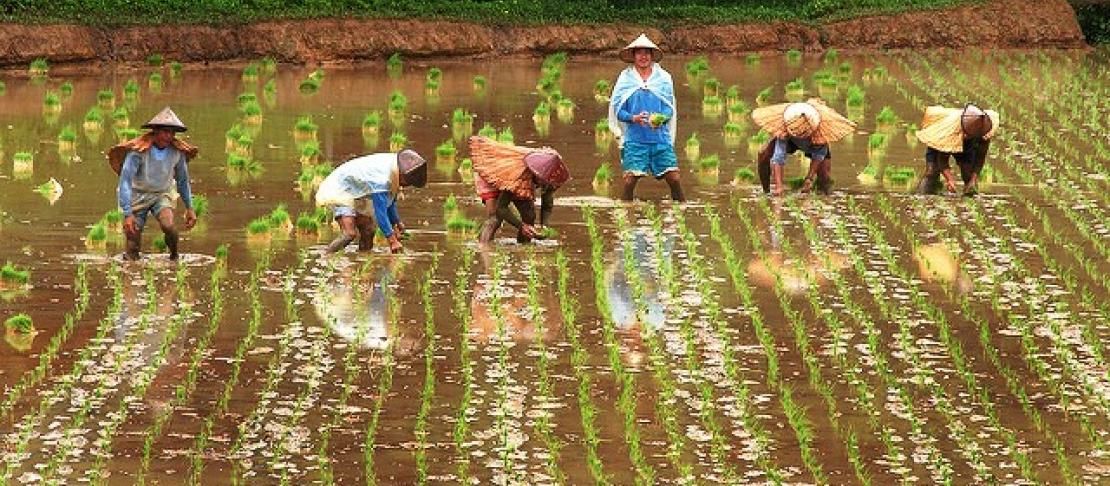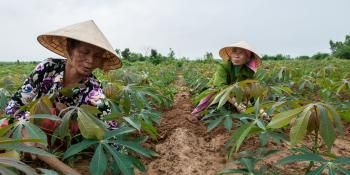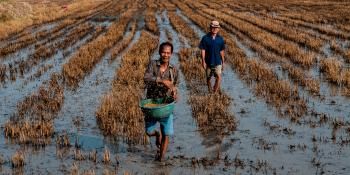Mapping partners right: a lesson on stakeholder engagement in Vietnam

Who are the major players in policy and development initiatives and how do they influence policy formulation and technology adoption?
Vietnam is at the forefront of global rice production—ranking second in the export market. But as the country strives to improve its rice production, on the other hand, it contributes to the 10% global methane emission from agriculture activities including rice cultivation. Methane is a potent greenhouse gas (GHG) that aggravates global warming.
Vietnam commits to global initiatives that aim to keep the global temperature to below 2o C. To design supporting activities, it is essential to know who influences policy formulation and likewise, who does the implementation of mitigation programs so as to achieve the outcome targets.
Through a NetMap Exercise, a project that focuses on climate change mitigation aimed to map the key actors and influencers in policy formulation and technology adoption in some provinces in southern Vietnam.
This joint project under the Climate and Clean Air Coalition’s (CCAC) Agriculture Initiative and the CGIAR Research Program on Climate Change, Agriculture and Food Security (CCAFS) aims to provide technical and policy guidance for national governments in implementing GHG mitigation options while maintaining or improving rice yields. The International Rice Research Institute (IRRI) is implementing this project in Vietnam and Bangladesh, while the International Center for Tropical Agriculture leads the work in Colombia.

Key stakeholders in some provinces in Vietnam participated in the NetMap activity to identify key actors and their influence in pushing for the adoption of the alternate wetting and drying technology across the country. Photo: Leah Cruz (IRRI)
The provinces of Thai Binh, An Giang and Bac Lieu were the focus of the NetMap workshops with the primary goal of increasing the adoption of the water-saving technique alternate wetting and drying (AWD). Various stakeholders from these provinces identified the most important actors, specified the links between them, and ranked their influence in increasing and accelerating AWD adoption.
The AWD technology is a climate-smart agriculture (CSA) practice that addresses the twin issues of adaptation and mitigation. Using AWD, rice farmers can save irrigation water by up to 30%, thus, gaining higher profit from reduced pumping cost. AWD has also been proven to reduce methane emissions from rice production by around 50%. Combined with other technology packages like nutrient and rice straw management, AWD is an effective technology in addressing climate concerns, hence, policy support on adoption and outscaling is vital. Ole Sander, project leader said:
The NetMap tool reveals the most important actors to engage with in complicated stakeholder networks. With results from this exercise we can develop targeted engagement strategies and design effective campaigns.
It is crucial, however, to incorporate the perceptions of many different stakeholders to draw unbiased conclusions.
The NetMap exercise involved small groups composed of representatives from government and non-government agencies, multi-sectoral unions and associations, farmers and private institutions.
The exercise highlighted the importance of mainstreaming CSA interventions in the provincial agricultural planning framework for effective upscaling. It established which sectoral groups have decisive roles in AWD adoption, hence, should be the target of intensive awareness and education campaign on the multiple benefits of AWD.
Bernadette Joven is a Senior Communication Specialist for CCAFS Southeast Asia and the International Rice Reseach Institute.



